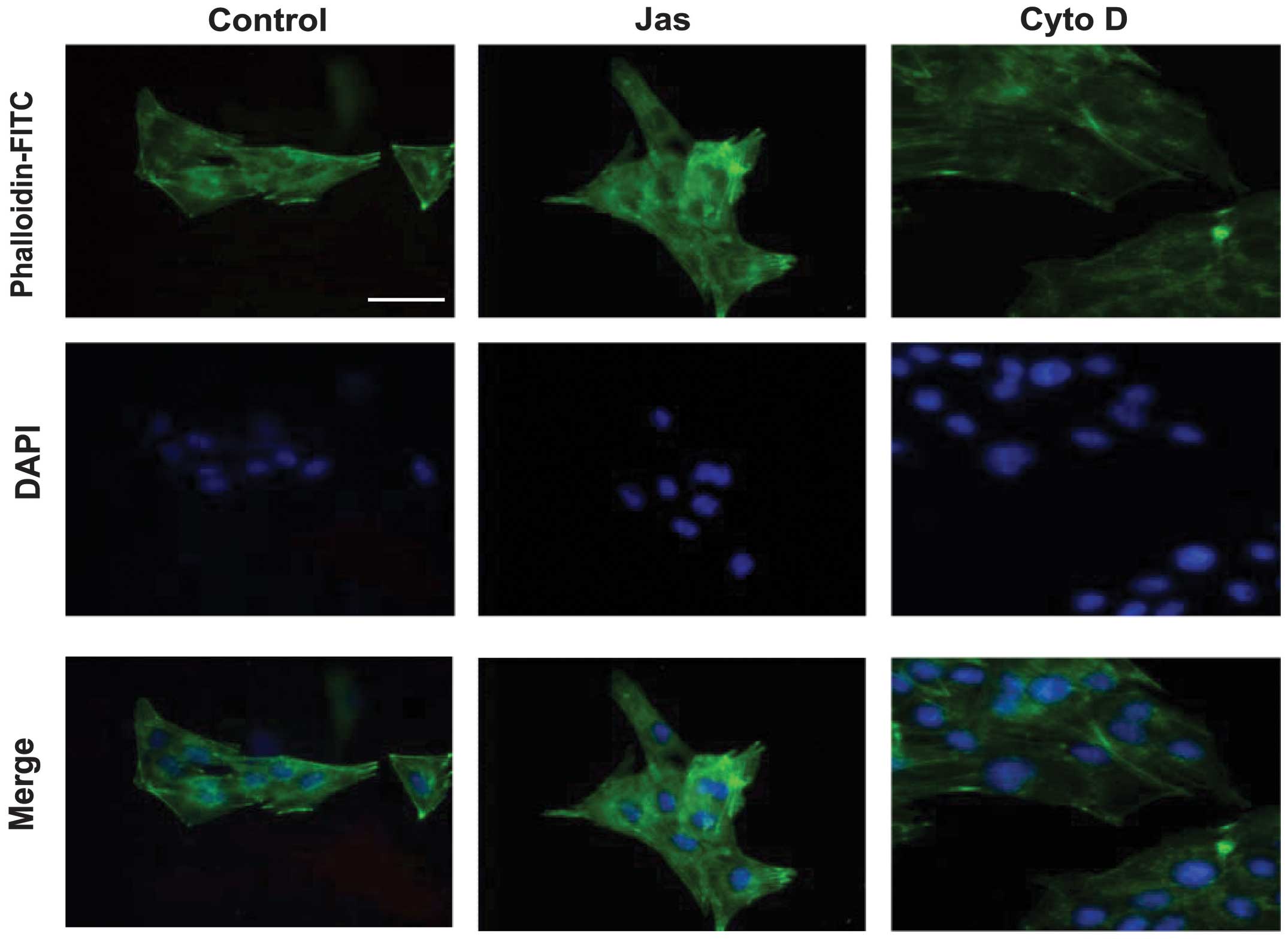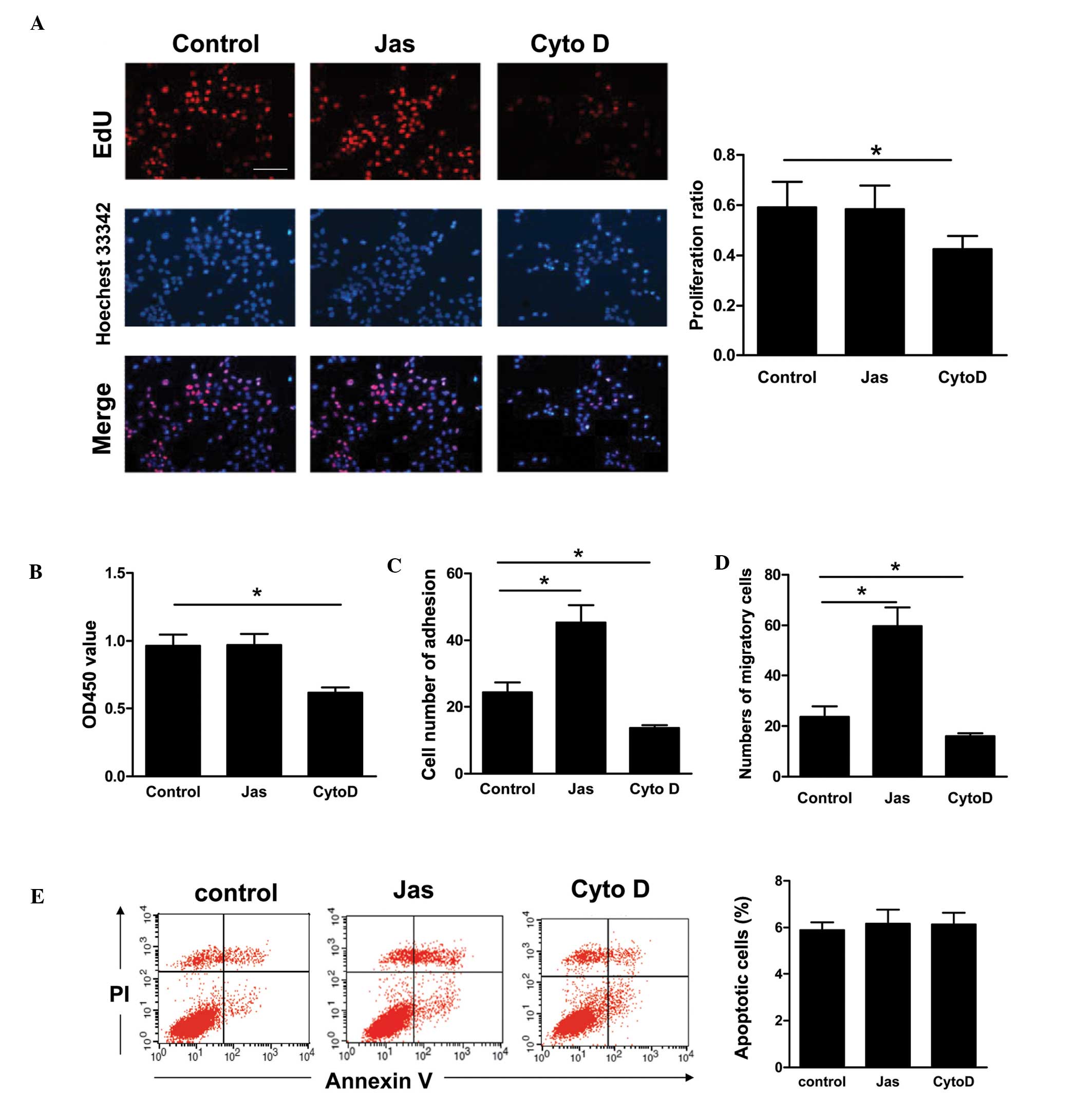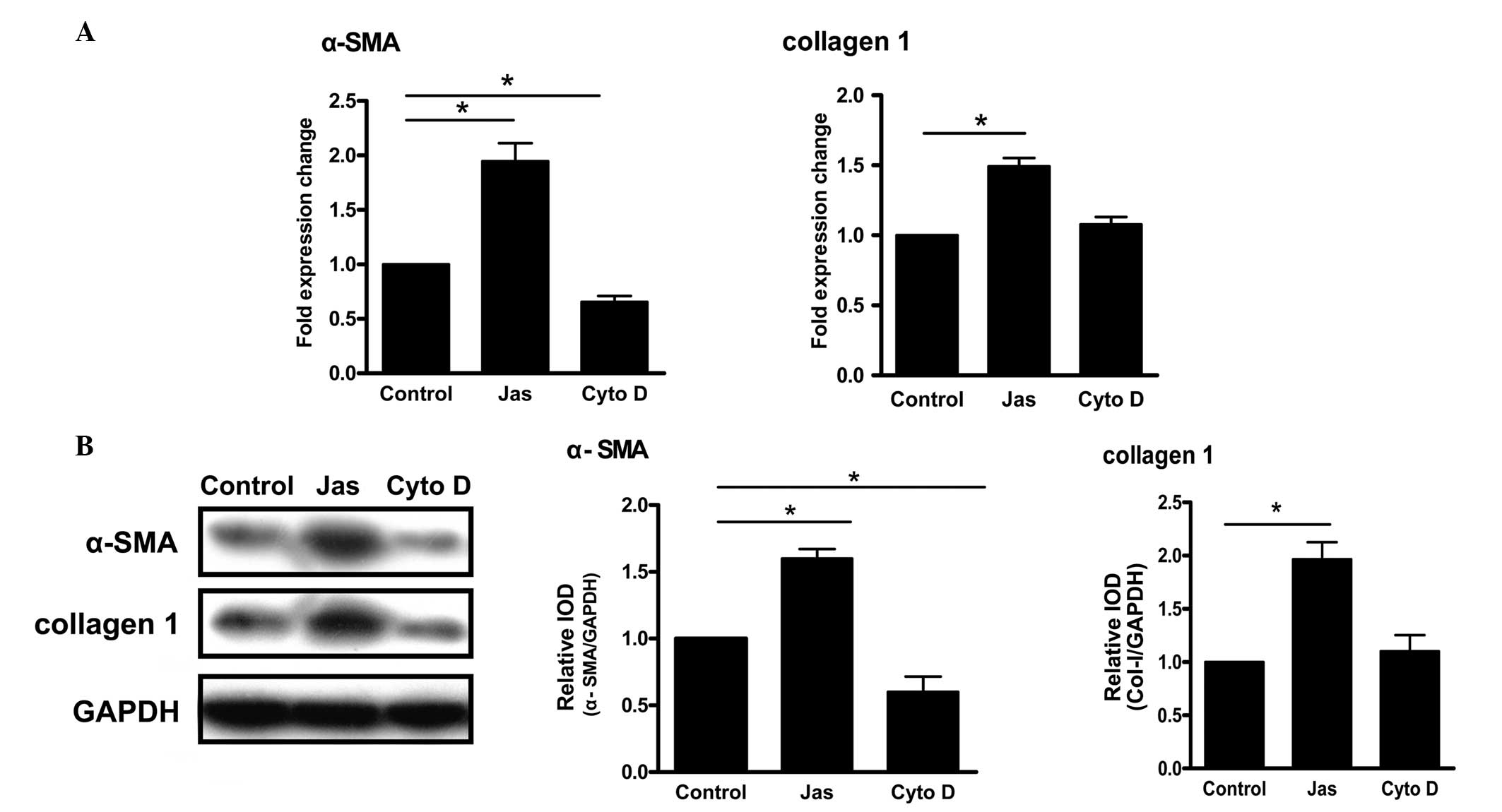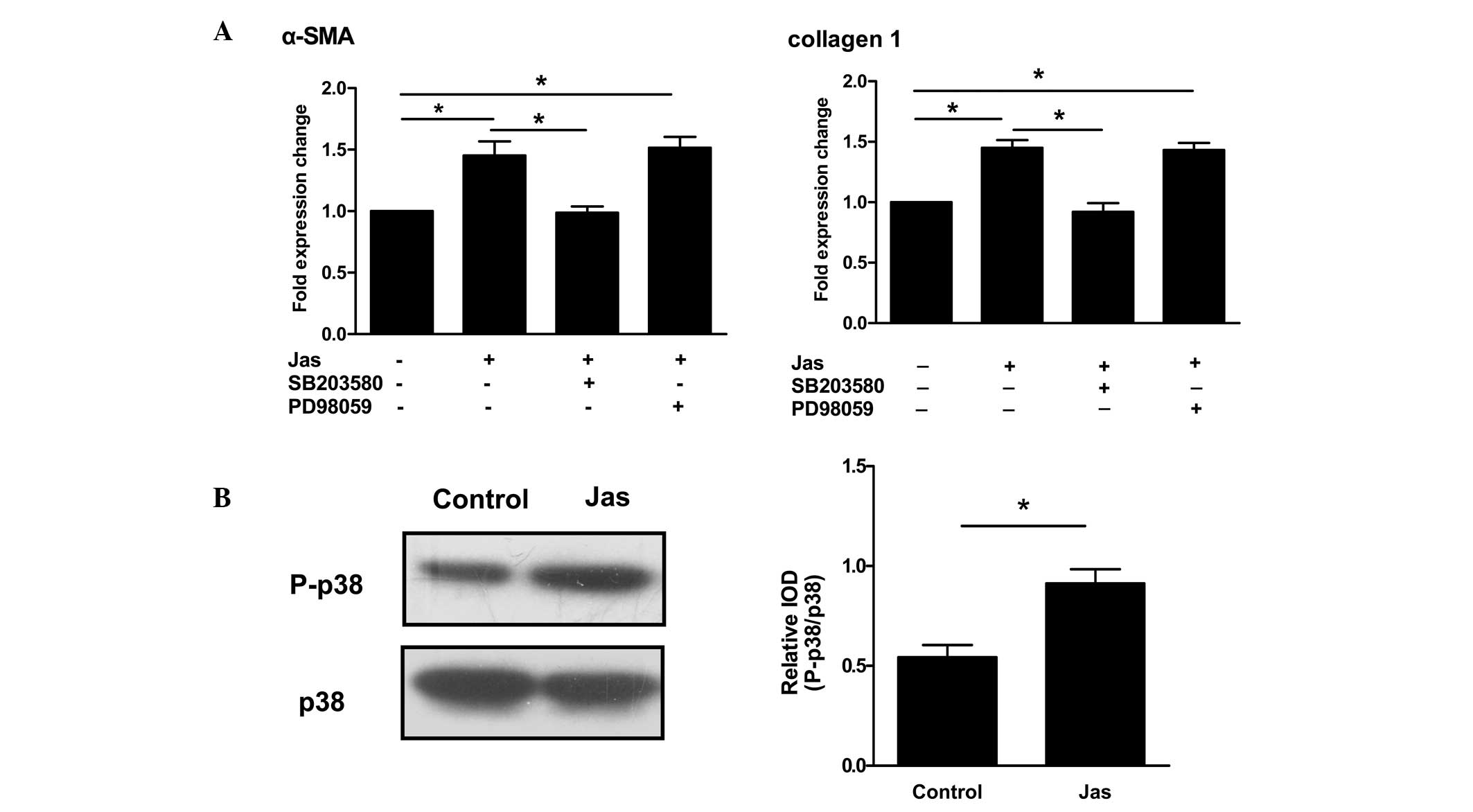|
1
|
Moreira RK: Hepatic stellate cells and
liver fibrosis. Arch Pathol Lab Med. 131:1728–1734. 2007.PubMed/NCBI
|
|
2
|
Priya S and Sudhakaran PR: Cell survival,
activation and apoptosis of hepatic stellate cells: modulation by
extracellular matrix proteins. Hepatol Res. 38:1221–1232.
2008.PubMed/NCBI
|
|
3
|
Jia YL, Shi L, Zhou JN, et al: Epimorphin
promotes human hepatocellular carcinoma invasion and metastasis
through activation of focal adhesion kinase/extracellular
signal-regulated kinase/matrix metalloproteinase-9 axis.
Hepatology. 54:1808–1818. 2011. View Article : Google Scholar
|
|
4
|
Odena G and Bataller R: Actin-binding
proteins as molecular targets to modulate hepatic stellate cell
proliferation. Focus on ‘MARCKS actin-binding capacity mediates
actin filament assembly during mitosis in human hepatic stellate
cells’. Am J Physiol Cell Physiol. 303:C355–C356. 2012.PubMed/NCBI
|
|
5
|
Rombouts K, Mello T, Liotta F, et al:
MARCKS actin-binding capacity mediates actin filament assembly
during mitosis in human hepatic stellate cells. Am J Physiol Cell
Physiol. 303:C357–C367. 2012. View Article : Google Scholar
|
|
6
|
Yee HF Jr: Rho directs
activation-associated changes in rat hepatic stellate cell
morphology via regulation of the actin cytoskeleton. Hepatology.
28:843–850. 1998. View Article : Google Scholar : PubMed/NCBI
|
|
7
|
Yamazaki D, Kurisu S and Takenawa T:
Regulation of cancer cell motility through actin reorganization.
Cancer Sci. 96:379–386. 2005. View Article : Google Scholar : PubMed/NCBI
|
|
8
|
Vogel S, Piantedosi R, Frank J, et al: An
immortalized rat liver stellate cell line (HSC-T6): a new cell
model for the study of retinoid metabolism in vitro. J Lipid Res.
41:882–893. 2000.PubMed/NCBI
|
|
9
|
Herrmann J, Gressner AM and Weiskirchen R:
Immortal hepatic stellate cell lines: useful tools to study hepatic
stellate cell biology and function? J Cell Mol Med. 11:704–722.
2007. View Article : Google Scholar : PubMed/NCBI
|
|
10
|
Zhang X, Cui X, Cheng L, et al: Actin
stabilization by jasplakinolide affects the function of bone
marrow-derived late endothelial progenitor cells. PLoS One.
7:e508992012. View Article : Google Scholar : PubMed/NCBI
|
|
11
|
Heidkamp MC, Bayer AL, Scully BT, Eble DM
and Samarel AM: Activation of focal adhesion kinase by protein
kinase C epsilon in neonatal rat ventricular myocytes. Am J Physiol
Heart Circ Physiol. 285:H1684–H1696. 2003.PubMed/NCBI
|
|
12
|
Salguero Palacios R, Roderfeld M, Hemmann
S, et al: Activation of hepatic stellate cells is associated with
cytokine expression in thioacetamide-induced hepatic fibrosis in
mice. Lab Invest. 88:1192–1203. 2008.PubMed/NCBI
|
|
13
|
Issa R, Zhou X, Trim N, et al: Mutation in
collagen-1 that confers resistance to the action of collagenase
results in failure of recovery from CCl4-induced liver fibrosis,
persistence of activated hepatic stellate cells, and diminished
hepatocyte regeneration. FASEB J. 17:47–49. 2003.
|
|
14
|
Chen A and Zheng S: Curcumin inhibits
connective tissue growth factor gene expression in activated
hepatic stellate cells in vitro by blocking NF-kappaB and ERK
signalling. Br J Pharmacol. 153:557–567. 2008. View Article : Google Scholar : PubMed/NCBI
|
|
15
|
Zhou Y, Jia X, Wang G, Wang X and Liu J:
PI-3 K/AKT and ERK signaling pathways mediate leptin-induced
inhibition of PPARgamma gene expression in primary rat hepatic
stellate cells. Mol Cell Biochem. 325:131–139. 2009. View Article : Google Scholar : PubMed/NCBI
|
|
16
|
Friedman SL: Molecular regulation of
hepatic fibrosis, an integrated cellular response to tissue injury.
J Biol Chem. 275:2247–2250. 2000. View Article : Google Scholar : PubMed/NCBI
|
|
17
|
Ikeda S, Cunningham LA, Boggess D, et al:
Aberrant actin cytoskeleton leads to accelerated proliferation of
corneal epithelial cells in mice deficient for destrin (actin
depolymerizing factor). Hum Mol Genet. 12:1029–1037. 2003.
View Article : Google Scholar
|
|
18
|
Nagano N, Aoyagi M, Hirakawa K, Yamamoto M
and Yamamoto K: Organization of F-actin filaments in human glioma
cell lines cultured on extracellular matrix proteins. J Neurooncol.
27:215–224. 1996. View Article : Google Scholar : PubMed/NCBI
|
|
19
|
Barbier S, Chatre L, Bras M, et al:
Caspase-independent type III programmed cell death in chronic
lymphocytic leukemia: the key role of the F-actin cytoskeleton.
Haematologica. 94:507–517. 2009. View Article : Google Scholar : PubMed/NCBI
|
|
20
|
Hernandez-Gea V and Friedman SL:
Pathogenesis of liver fibrosis. Annu Rev Pathol. 6:425–456. 2011.
View Article : Google Scholar
|
|
21
|
Lee UE and Friedman SL: Mechanisms of
hepatic fibrogenesis. Best Pract Res Clin Gastroenterol.
25:195–206. 2011. View Article : Google Scholar
|
|
22
|
Senoo H, Yoshikawa K, Morii M, Miura M,
Imai K and Mezaki Y: Hepatic stellate cell (vitamin A-storing cell)
and its relative - past, present and future. Cell Biol Int.
34:1247–1272. 2010. View Article : Google Scholar : PubMed/NCBI
|
|
23
|
Wang LT, Zhang B and Chen JJ: Effect of
anti-fibrosis compound on collagen expression of hepatic cells in
experimental liver fibrosis of rats. World J Gastroenterol.
6:877–880. 2000.PubMed/NCBI
|













